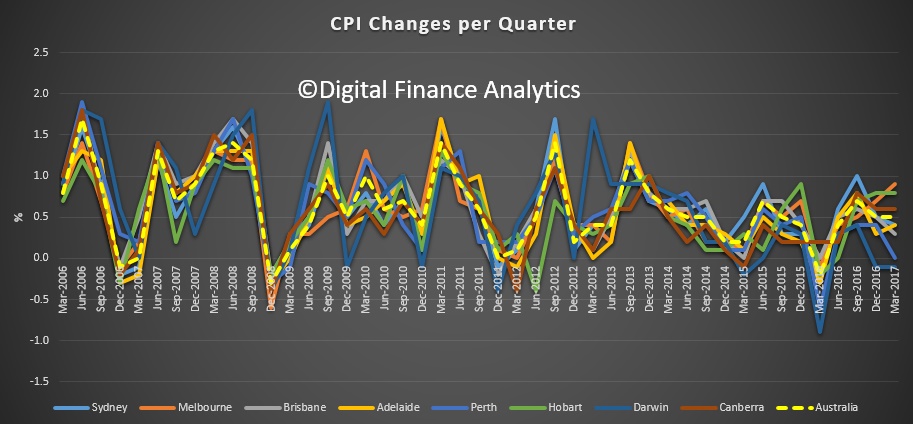The data from the ABS today shows that the Consumer Price Index (CPI) rose 0.5 per cent in the March quarter 2017. This follows a rise of 0.5 per cent in the December quarter 2016. The CPI rose 2.1 per cent through the year to March quarter 2017. The trimmed mean was 1.9 per cent. Housing costs rose 2.5 per cent is the past year.
 In original terms, Melbourne prices rose 0.9% in the quarter, highlighting the pressure on households there. As we said the other day, average CPI is understating what is happening in Victoria at the moment.
In original terms, Melbourne prices rose 0.9% in the quarter, highlighting the pressure on households there. As we said the other day, average CPI is understating what is happening in Victoria at the moment.
This data confirms the next RBA cash rate adjustment is more likely up, than down. It also underscores the flat, or falling income growth households are experiencing. More pressure, more mortgage stress as cost of living rises outstrip income growth, in a rising mortgage rate market.
The most significant price rises this quarter are automotive fuel (+5.7 per cent), medical and hospital services (+1.6 per cent) and new dwelling purchase by owner-occupiers (+1.0 per cent). These rises are partially offset by falls in Furnishings, household equipment and services (-1.0 per cent) and Recreation and culture (-0.7 per cent).
Vegetable prices have risen 13.1 per cent through the year to March quarter 2017. Adverse weather conditions in major growing areas over previous periods continue to impact supply for particular vegetables (potatoes, salad vegetables, cabbages and cauliflower). Offsetting these rises are price falls for capsicums and broccoli.
